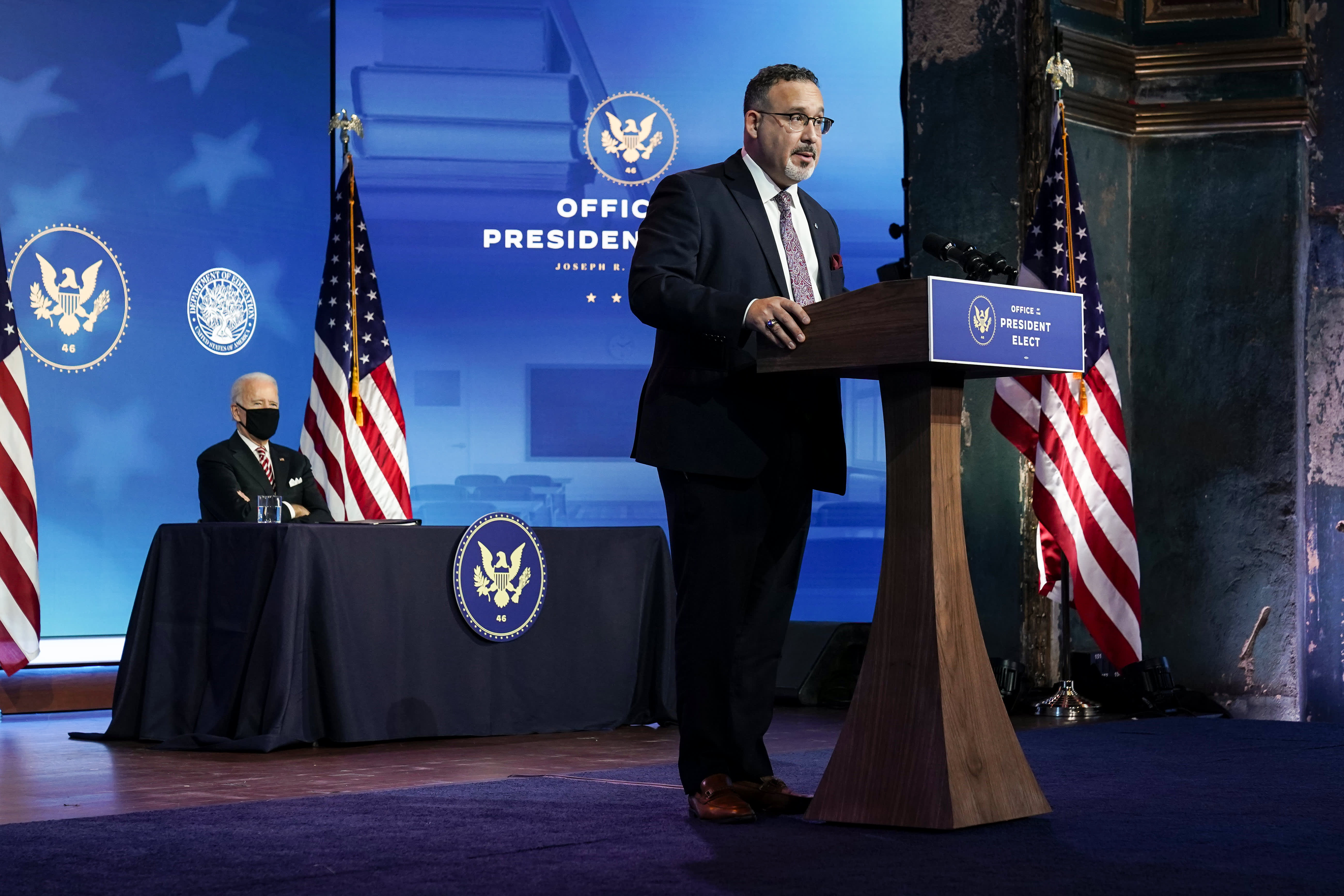
Since taking office, the Biden Administration has approved over $9.5 billion of student loan relief, mostly for borrowers with a total and permanent disability. The amount forgiven, however, remains a small percentage of the over $1.7 trillion worth of student loans that Americans still collectively owe.
In a Wednesday town hall, Education Secretary Miguel Cardona spoke with CNBC’s Sharon Epperson about the Department of Education’s plans for addressing a range of issues, including the student loan crisis.
“Public Service Loan Forgiveness is going to be one of the major strategies that we take, especially when educators who have been serving for years routinely get turned away,” said Cardona. “We need to revamp that system and make it more user-friendly. We need to keep the borrower at the center, especially for people who choose public service.”
On Oct. 6, the Department announced a series of changes to the Public Service Loan Forgiveness Program to address the program’s history of rejecting roughly 99% of borrowers who apply for forgiveness.
When asked about broad-based student loan forgiveness, Cardona said the topic was still being discussed.
“We’re going to continue conversations around loan forgiveness — broad loan forgiveness,” he said. “But we also have a Build Back Better Agenda that provides community college for all. If passed, and I’m really hopeful, we can correct some of the issues that have happened in the past, so that we don’t have people swimming in debt and we can stop the bleeding.”
Epperson followed up on the issue of broad student loan forgiveness.
“Our conversations are ongoing with the Department of Justice and the White House on those issues. We are also wanting to make sure that we’re doing not only the broad support for borrowers but also stopping the bleeding,” responded Cardona, pointing back to the changes made to the PSLF program. “We’ve provided over $9.5 billion in loan relief since March. $9.5 billion in about seven months is pretty significant.”
The statement comes after months of debate about student debt relief and its implementation.
On the campaign trail, President Joe Biden issued his support for some form of student loan forgiveness for undergraduate borrowers. Since then, House and Senate Democrats repeatedly urged Biden to “broadly” forgive up to $50,000 of federal debt through executive order during his first 100 days in office.
While in office, Biden has repeatedly pushed back against leaders of his own party, stating that he will only support up to $10,000 of debt forgiveness and that he would prefer Congress craft the legislation.
“I am prepared to write off $10,000 [of] debt, but not $50,000,” Biden told an audience member during a Feb. 2021 town hall. “I don’t think I have the authority.”
Biden then requested the Departments of Education and Justice to craft a memo about the use of executive authority to cancel student loans, seemingly putting the future of student loan forgiveness into the hands of appointees like Cardona.
Some, like higher education expert Mark Kantrowitz, believe the memo will not authorize Biden’s use of executive order to forgive student loan debt.
“Only after he receives that report, which I expect will find that he does not have the legal authority, will the ball be in Congress’ court,” Kantrowitz told CNBC Make It in May.
“President Biden absolutely has the authority to cancel student debt,” said Ashley Harrington, federal advocacy director and senior counsel at the Center for Responsible Lending. “This is the same authority that was used by the Trump administration last year to waive interest and pause payments or for federal borrowers who had federally held loans. That same authority was used later that year to extend that pause.”
And with Congress currently struggling to pass legislation, Kevin Walker, publisher at CollegeFinance says the use of executive authority is the most likely way student loan forgiveness could be passed.
“A lot of the things that the administration is trying to get through Congress, that are expensive and controversial, are facing a lot of headwinds already,” he says. “However, I think there’s some chance that the Department of Education will decide that the President or the Secretary of Education has the authority to administratively forgive loans because, in fact, they do this already.”
Walker continues, “I think the chances are better that they will find that the Secretary or the President has this authority and I think the reason is that there’s a precedent of forgiveness that’s all already been accomplished administratively.”
Don’t miss:




